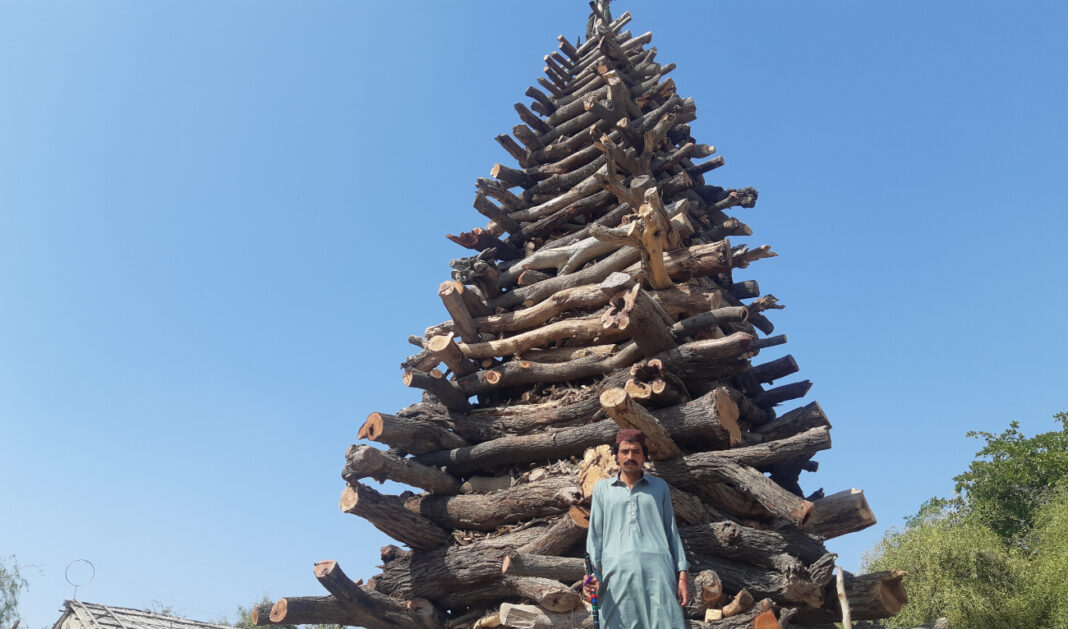SANGHAR, Pakistan: For the last 300 years, thousands of Hindus and Muslims have gathered annually in the southern Pakistani village of Barham Bar to commemorate the anniversary of the death of a beloved local saint with a bonfire festival.
But in recent years, due to a scarcity of wood, the trapezoid-shaped bonfire structure, which was often more than 90 feet tall, has shrunk.
And environmental experts have warned that the ritual is contributing to some of the climate-change problems being faced by Pakistan.
The so-called Machh ritual marks the death anniversary of Bahram Bari Junejo, whose son was said to have received a spiritual signal in a dream to build a 90-foot wooden structure to commemorate the first anniversary of the saint’s passing.
This year, thousands of the saint’s Muslim and Hindu devotees from throughout Pakistan’s southern Sindh province and beyond, attended the 305th edition of the festival, many leaving with ashes from the bonfire which they believe possess healing powers and can be used to enhance crop yields and tame genies.
Faqeer Saddam Hussain Junejo, the shrine’s caretaker, told Arab News: “The height of the bonfire structure this year is 35 feet, which is quite unique in Pakistan. If investigated, a bonfire of this size could prove to be an international novelty.
“No government or international organization has officially recognized its distinction yet,” he said. “Official status can enhance tourism in this area.”
A view of the bonfire at Bahram Bari Junejo’s shrine in Sanghar district of Sindh province in Pakistan on February 15, 2022. (AN Photo by Abdul Ghaffar Chang)
Muhammad Khan Makrani, 70, travelled 200 kilometers to participate in the festival for the first time in 40 years.
“Things have changed here, the bonfire size is too small compared to the past,” he said. “The last time I came to the festival, it was three times taller than what we are witnessing today.”
Junejo pointed out that a lack of available wood had contributed to the diminishing size of the fire.
“The weight of wood used for the bonfire this year is around 48 metric tons,” he added.
The UN has recommended every country to have a minimum of 25 percent forest cover but, in Sindh, the area has dwindled to less than two percent with Makhi Forest in Sanghar an example of where trees have been stripped from the landscape due to illegal logging.
Musicians entertain the crowd before the bonfire ritual of Machh at Bahram Bari Junejo’s shrine in Sanghar district of Sindh in Pakistan on February 15, 2022. (AN Photo by Abdul Ghaffar Chang)
Festival organizers, however, said that the wood used for the festival bonfire was always sourced from “private forests” that were not government property.
But environmental activists in the region claim it is irrelevant where the wood comes from.
“Pakistan does not have enough forest cover,” Mansoor Memon from the Environmental Friends Committee, a local pressure group of activists, told Arab News. “Yet, we see such rituals where people are making huge bonfires without realizing that it is a total waste of forest resources.
“Whether the wood is coming from government or private lands, this exercise needs to stop since we are already facing the impact of climate change in Pakistan,” he added. “Authorities should take notice of this festival.”
Deputy commissioner of Sanghar, Dr. Imran-ul-Hassan Khawaja, was unavailable for comment.




